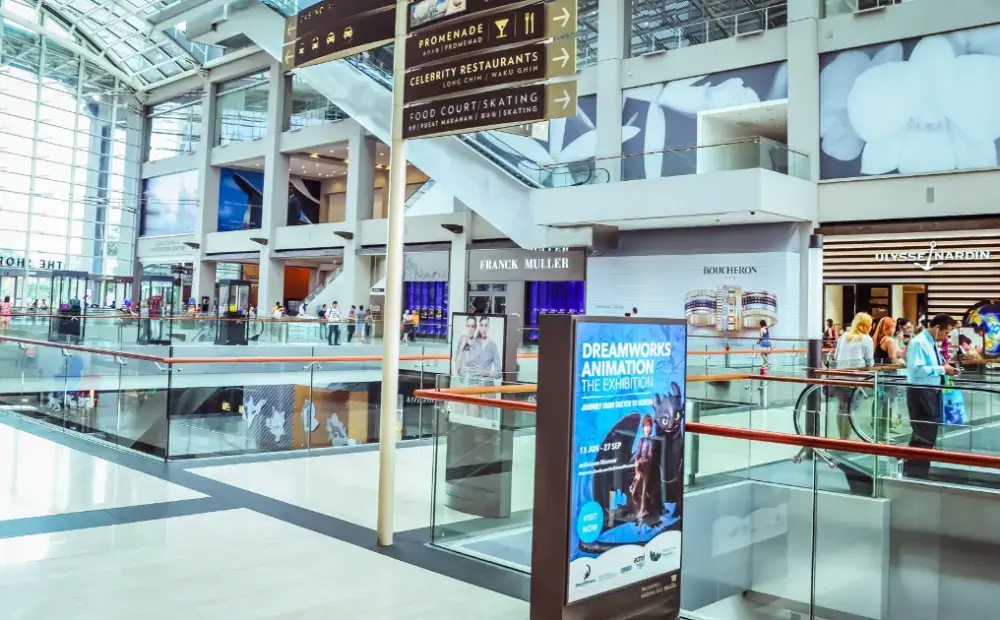You’ve seen sleek digital kiosks in malls, airports, and city centers. They are placed to promote brands and deliver targeted ads to thousands in real-time. Kiosk advertising is far better than static billboards. The interactive display of a kiosk is changing how brands capture attention.
This guide covers everything you need to know about digital kiosks. You’ll learn what kiosks are. We’ll explain how kiosk advertising works. And we’ll show you why these smart tools are key in modern marketing.
So if you are planning your next marketing campaign or looking for a better medium to showcase your brand, this is your go-to resource. Keep reading.
What Is a Kiosk? And Why It’s Now a Key Player in Modern Advertising
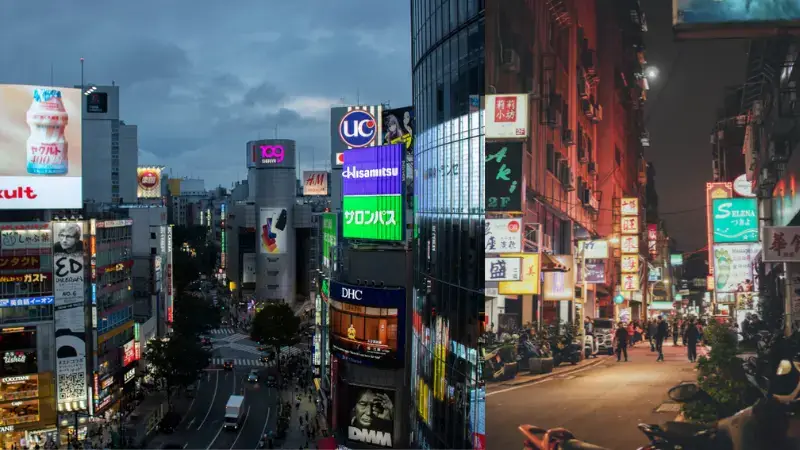
A kiosk is a small booth set up in busy places to sell things, provide services, or share information. Today, many brands use digital kiosks to grab people’s attention and show ads.
The word “kiosk” comes from the Turkish term kiōsk, which literally means a pavilion or open structure. Over time, the term shifted toward commercial and information-based structures in public settings.
Why Digital Kiosks Matter in Marketing
Kiosk advertising is growing fast, and the reasons are clear.
- By 2024, over 2.2 million digital kiosks are in use worldwide. Retail and advertising industries are leading the way.
- About 63% of marketers say kiosks improved their local visibility and engagement.
- The digital out-of-home ad market may reach $58 billion by 2027. Kiosks are a big part of that growth.
This shift shows that real-world screens now work like online ads…smart and data-driven.
Kiosks combine physical presence with digital targeting, a blend that drives results.
Types of Kiosks in Use
There are three types of Kiosks.
- Retail kiosks – sell goods or services (e.g., food carts, pop-up shops
- Self-service kiosks – allow users to check in, place orders, or pay
- Digital information or ad kiosks – display targeted media, promotions, or directions
This article focuses on the third type. These kiosks grab attention, share brand messages, and give trackable results in real life.
What Is Kiosk Advertising? (Purpose + Characteristics)
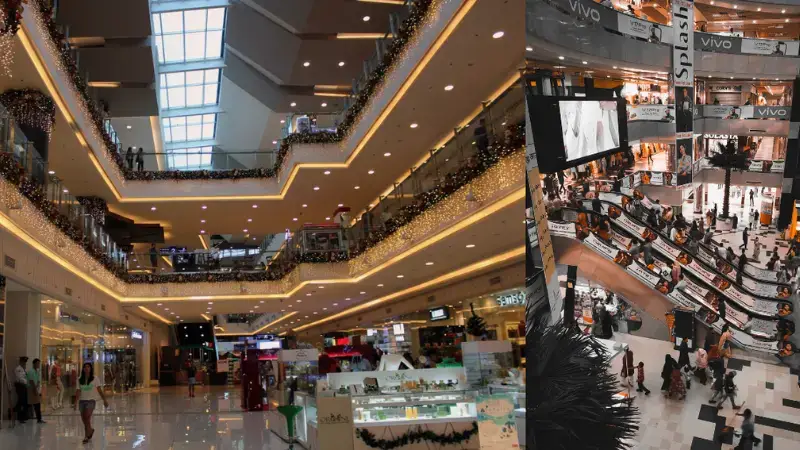
Kiosk advertising uses screens in public places to show ads, brand messages, or product info.
You’ll often see them in malls, airports, train stations, sidewalks, or office campuses.
They go where people naturally walk or gather.
Purpose of Kiosk Advertising
A digital advertising kiosk aims to reach your audience with targeted, hard-to-ignore content. These units serve as digital billboards with physical billboard precision.
Businesses use them to:
- Promote limited-time offers
- Increase local visibility
- Reinforce brand presence
- Share updates or directions in real-time
Whether you’re a big brand or a local shop, kiosks connect online and offline engagement.
Key Characteristics
Digital kiosks have four key traits that make them a top choice for advertising.
- Location-based: Deployed in areas with predictable foot traffic
- Time-sensitive: Content can be scheduled to change by time of day
- Interactive (in some cases): Some kiosks allow touch or motion engagement
- Trackable: Digital units can deliver usage data, impressions, and ROI metrics
Static vs. Digital Ad Kiosks
Digital ad kiosks give you more control, better targeting, and clear, trackable results.
Modern marketers expect these features.
| Feature | Static Kiosk Ads | Digital Advertising Kiosks |
|---|---|---|
| Content | Printed or vinyl posters | Dynamic, programmable content |
| Updates | Manual replacement needed | Remote updates in seconds |
| Cost Over Time | Higher (due to printing) | Lower (after setup) |
| Engagement Level | Passive | Interactive (optional) |
| Data/Analytics | None | Real-time metrics |
Where Are Ad Kiosks Typically Used?
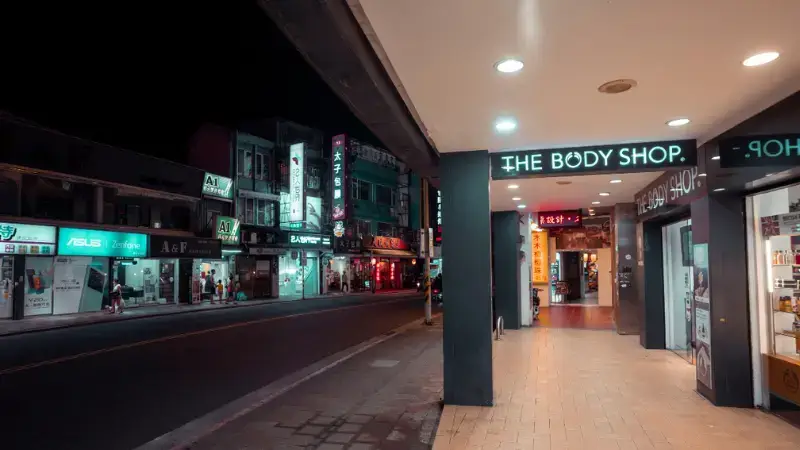
Shopping Malls
Ad kiosks are positioned at entrances, walkways, and food courts. They help brands reach buyers at the decision-making moment.
Retailers often rotate ads based on the time of day or store promotions.
Airports and Transit Hubs
These locations offer long dwell times and high foot traffic. Digital kiosks display travel services, luxury goods, and local promotions.
Targeting is often tailored to traveler demographics and time zones.
City Sidewalks and Urban Centers
These kiosks sit near crosswalks, metro stops, and busy streets. These Kiosks serve both public and business needs.
They promote events, products, and services with immediate relevance to passersby.
Hotels, Campuses, and Retail Stores
In hotels, kiosks showcase in-house dining, partner services, or nearby attractions. They act as both directories and promotional platforms on campuses and retail floors. Businesses use them to drive in-store traffic or app engagement.
The placement of an advertising kiosk depends on the campaign’s purpose and where your target audience spends the most time.
Types of Ad Kiosks and How They Work
Ad kiosks come in multiple formats. Each format is built for a different level of engagement, content type, and environment.
Understanding these types helps businesses match the right kiosks to their advertising goals.
- Static Ad Kiosks
These are non-digital displays using printed posters or backlit panels. They’re common in malls, transit stations, and sidewalks.
Ideal for brand awareness or local promotions where high-tech solutions aren’t needed.
- Digital Advertising Kiosks
These use high-resolution screens to run rotating video or image-based ads. Many support scheduling and geo-targeting. Brands use them for national campaigns or real-time promotions.
They are often placed in city centers, airports, or shopping districts.
- Interactive Ad Kiosks
These feature touchscreens, often supported by sensors or cameras. They allow users to explore products, answer surveys, or sign up for services.
Marketers use them for lead generation and customer interaction. Ideal for tech-driven campaigns.
- Self-Service Kiosks with Ads
These kiosks serve a primary function (e.g., ordering food or tickets) but display ads when idle. They work well in restaurants, QSRs, or retail.
The key advantage is a captive, relevant audience already ready to act.
| Kiosk Type | Key Feature | Best Used For |
|---|---|---|
| Static Ad Kiosks | Poster-based display | Local branding, small-scale promos |
| Digital Ad Kiosks | Rotating video/image ads | High-traffic areas, large campaigns |
| Interactive Ad Kiosks | Touchscreens, engagement tools | Lead capture, product demos |
| Self-Service Kiosks w/ Ads | Idle-time ad display on the service unit | Restaurants, ticketing, and in-store ads |
Key Benefits of Kiosk Advertising
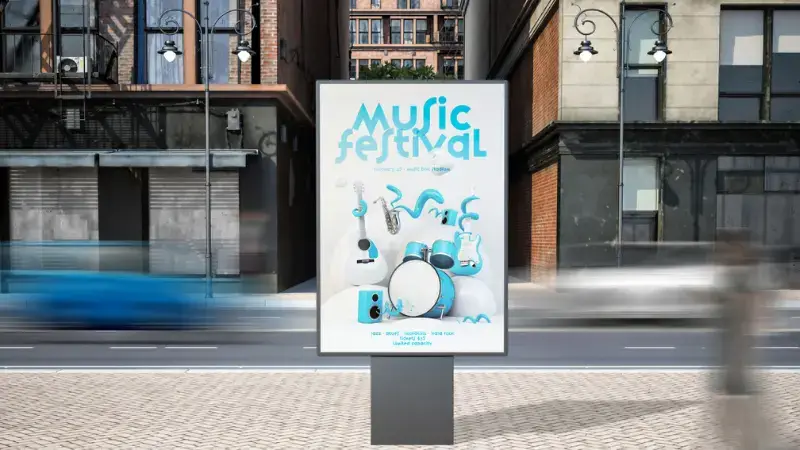
For Brands & Advertisers
- High visibility and dwell time
Advertisers place kiosks where people naturally stop, wait, or stroll. This boosts attention span compared to mobile or desktop ads.
Shoppers spend an average of 5–10 minutes in front of kiosks in malls or stations.
- Cost-effective compared to billboards or TV
Digital kiosks can host multiple campaigns in a single unit. This reduces production and placement costs. Unlike TV, there’s no wasted spend on unrelated audiences.
CPM rates for kiosks often fall below traditional outdoor media.
- Targeted scheduling and audience reach
Marketers schedule content based on time of day, location, or foot traffic trends. This helps brands deliver the right message at the right moment.
National brands use this to localize content without creating new campaigns.
- Real-time performance and content control
Through sensors, advertisers can monitor impressions, playback reports, and even audience analytics. They update campaigns remotely.
This cuts lead time from weeks to hours, giving marketers tighter control.
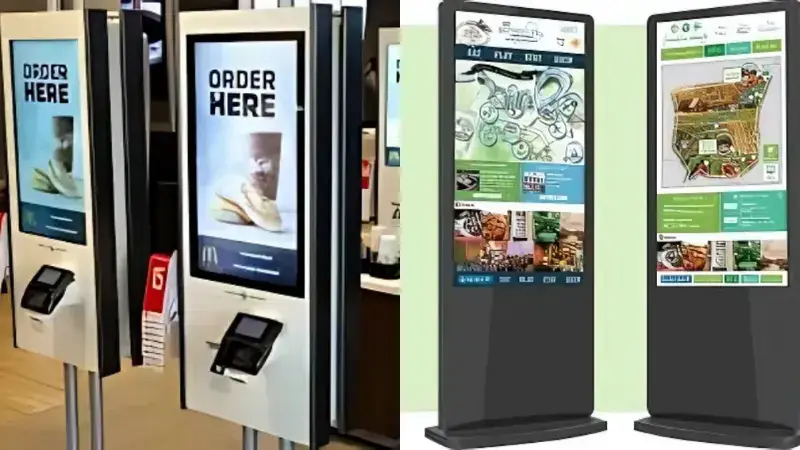
For Venue & Property Owners
- Turn unused space into income
Lobbies, hallways, and walls can host kiosks without disrupting operations. Property owners earn from ad revenue or charge brands for placement.
- Boost customer interaction
Interactive or well-placed digital kiosks can make venues feel modern and functional. They help visitors navigate, learn about offers, or simply stay longer.
- Drive foot traffic to stores or on-site businesses
Ad kiosks placed near stores or food courts help promote in-house services. This raises the chance of walk-ins and supports other tenants.
Marketing Strategies to Maximize Kiosk ROI

To get real returns from kiosk advertising, campaigns must be more than just visible.
These four strategies help increase engagement, conversions, and long-term value.
1. Use mobile-integrated CTAs
- Add QR codes to digital kiosks for quick access to landing pages.
- Use short SMS keywords for opt-ins or limited-time offers.
- Include mobile CTAs like “Scan to Shop” or “Get Promo Now.”
These tools bridge offline to online and help track user actions.
2. Apply dayparting for time-sensitive content
Schedule content based on traffic flow and time of day.
- Promote coffee offers during the morning rush.
- Switch to lunch deals from 11 AM to 2 PM.
- Run brand ads in the evening when shoppers linger.
This ensures the right message is shown at the right time.
3. Leverage AI for smart personalization
Some smart kiosks support audience detection and content triggers.
- Use sensors or cameras to detect demographics and adapt content.
- Rotate creatives based on historical engagement data.
- Auto-optimize underperforming ads with machine learning insights.
This can raise conversion rates and reduce ad waste.
4. Sync with other digital channels
Tie kiosk campaigns into a broader digital strategy.
- Match creatives with paid social, display, or email campaigns.
- Re-engage kiosk viewers through retargeting on mobile or the web.
- Track engagement through UTM codes and landing page analytics.
This reinforces messaging and makes each impression work harder.
Real-World Examples of Kiosk Advertising Done Right

JCDecaux → Transformed Urban Advertising
JCDecaux is changing street advertising with its smart digital kiosks.
In San Francisco, they set up 17-foot-tall digital screens near business centers and busy transit spots.
The kiosks give advertisers excellent access to workers and daily commuters. That means more people see and interact with ads.
This setup brings a fresh look to city ads. It also fits well into the city’s design, offering both style and use.
Sephora → Enhanced Retail Experience with Interactive Kiosks
Sephora has leveraged interactive kiosks to elevate the in-store shopping experience. Their Skincare IQ kiosks analyze each person’s needs to help them find the right skincare products.
Sephora uses location data to place these self-service kiosks in the right spots.
This strategy makes the kiosks easy to access for target customers and boosts engagement.
Airports → Engaging Travelers Through Interactive Kiosks
Airports have adopted interactive kiosks to enhance passenger engagement and streamline services.
For instance, Dubai International Airport implemented a comprehensive digital signage system. It includes interactive wayfinding kiosks to improve navigation and provide real-time information.
These kiosks not only assist travelers but also offer targeted advertising opportunities. This way, the brands connect with a diverse, global audience in a high-traffic environment.
Is Kiosk Advertising Right for Your Business?
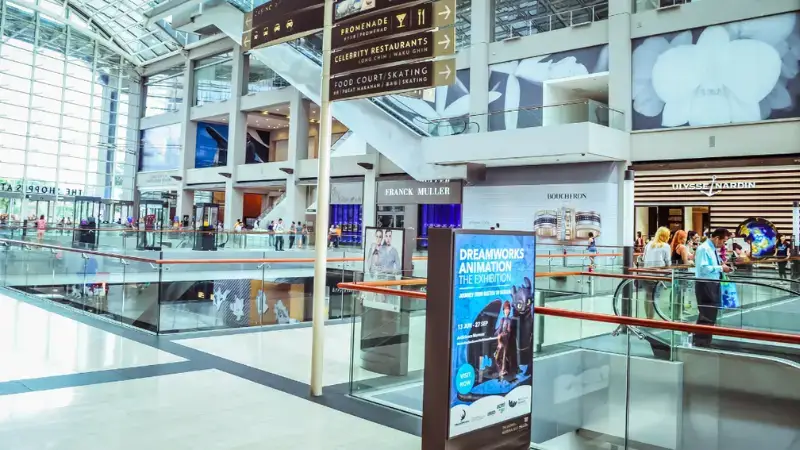
Kiosk advertising is not one-size-fits-all. But when you know your needs and plan accordingly, it brings real results.
Best Fit For
Kiosk advertising works best when paired with real-world traffic and time-sensitive messaging.
It’s a strong fit for:
- Local brands with physical stores
Want to drive foot traffic from nearby sidewalks or shopping centers? Kiosks help place your message directly in front of passersby.
- National retailers seeking urban presence
For brands looking to establish visibility in dense metro zones, kiosks offer access without the overhead of permanent retail space.
- Event or seasonal marketers
Product launches, local festivals, or holiday campaigns can benefit from short-term, high-impact kiosk visibility.
Key Considerations Before Launch
Before investing in kiosk advertising, consider the following:
- Foot traffic and location strategy
High-traffic urban areas, malls, or airports offer the most value. Avoid low-footfall zones.
- Content type and screen format
Will your ad use static visuals, video, or interactive elements? The content must match the kiosk network’s screen capabilities.
- Budget and ROI timeline
Kiosk campaigns are more cost-effective than traditional billboards but still require upfront investment. Define your campaign goals and measure ROI based on impressions, interactions, or walk-ins.
FAQs
What is the difference between a digital kiosk and a self-service kiosk?
A digital kiosk displays ads or content on a screen. A self-service kiosk lets users interact with it, such as placing orders or checking in. Some self-service kiosks show ads when idle.
Do ad kiosks work without the internet?
Yes, but with limits. They can show preloaded ads. But features like remote updates, live data, or content changes need internet access.
Can I place my own ad on a kiosk in a shopping mall?
Yes, but only through the kiosk operator or media owner. You must follow their content guidelines, pay for placement, and choose available time slots or screens.
Are ad kiosks interactive or static?
Both exist. Static kiosks show printed posters. Digital kiosks either play content or let users interact using touchscreens. The format depends on the location and target use.
What kind of analytics do digital kiosks provide?
They can track impressions, dwell time, interaction rates, and content performance. Some advanced kiosks offer audience demographics using sensors or third-party tools.
Conclusion
The way brands compete for physical attention is changing. Screens on the street aren’t noise…they’re strategy.
Kiosks give you placement where it counts: in front of people, in real-time, with real results.
As cityscapes get smarter, standing still means falling behind. Forward-thinking brands are already embedding kiosk campaigns into their media mix. The next move is yours.
Ready to promote your brand with digital ad kiosks?
Explore smart advertising solutions with SwiftForce’s customizable hardware. Visit our homepage to learn more or contact us today to get started with a tailored quote.

